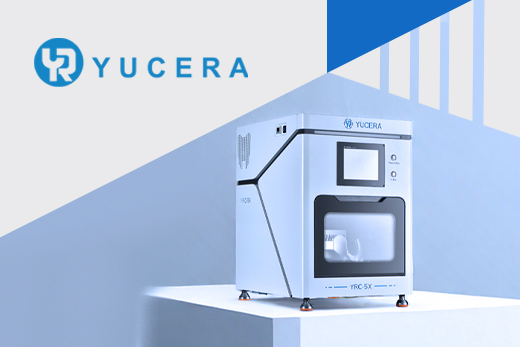The Difference Between Dental Intraoral Scanning and Traditional Impressions
2024-10-15
2024-07-05
Maintaining Efficiency: A Guide to CAD CAM Milling Machine Maintenance
In today's fast-paced dental industry, CAD/CAM milling machines have become indispensable tools for producing high-quality dental restorations. These sophisticated machines provide unparalleled precision, efficiency, and versatility. However, like any advanced equipment, they require regular maintenance to ensure optimal performance and longevity. This comprehensive guide delves into the best practices for maintaining CAD/CAM milling machines, ensuring they operate at peak efficiency and meet the highest standards of care.

The Importance of Regular Maintenance
Regular maintenance of CAD CAM milling machines is crucial for several reasons:
Operational Efficiency: A well-maintained machine operates smoothly, reducing downtime and increasing productivity.
Precision and Accuracy: Maintenance ensures that the machine continues to produce restorations with the highest level of accuracy.
Longevity: Proper care extends the lifespan of the equipment, providing a better return on investment.
Safety: Regular checks and servicing help prevent malfunctions that could pose safety risks to operators.
Daily Maintenance Routine
Cleaning
Surface Cleaning: Clean the exterior surfaces of the machine with a damp cloth to remove dust and debris. Avoid using abrasive materials that could damage the machine's finish.
Internal Cleaning: Use compressed air to blow out any particles from the spindle and milling chamber. Ensure the machine is turned off and unplugged before performing this task.
Tool Cleaning: Clean the milling tools and check for wear and tear. Replace any worn-out tools to maintain cutting precision.
Lubrication
Moving Parts: Lubricate the moving parts of the machine as specified in the user manual. This includes the spindle, guide rails, and any other components that require lubrication.
Tool Holder: Apply a small amount of lubricant to the tool holder to ensure smooth tool changes.
Software Updates
Firmware and Software: Check for any available firmware or software updates from the manufacturer. Keeping the machine's software up to date can improve performance and security.
Weekly Maintenance Routine
Calibration
Axis Calibration: Perform a calibration check on the machine’s axes to ensure they are moving accurately. Use the calibration tools and software provided by the manufacturer.
Tool Calibration: Check the calibration of the milling tools to ensure they are cutting precisely.
System Checks
Error Logs: Review the machine’s error logs to identify any recurring issues. Address these issues promptly to prevent further complications.
Cooling System: Check the cooling system to ensure it is functioning correctly. Clean or replace filters as needed.
Monthly Maintenance Routine
Comprehensive Cleaning
Deep Cleaning: Perform a thorough cleaning of the machine’s interior, including the milling chamber and spindle. Use appropriate cleaning agents recommended by the manufacturer.
Ventilation: Clean the ventilation system to ensure proper airflow and cooling.
Component Inspection
Belt and Pulley: Inspect the belts and pulleys for signs of wear or damage. Replace any components that show significant wear.
Electrical Connections: Check all electrical connections for signs of wear or corrosion. Tighten or replace any loose or damaged connections.
Quarterly Maintenance Routine
Professional Servicing
Manufacturer Service: Schedule a professional servicing appointment with the manufacturer or an authorized service provider. This ensures that the machine is thoroughly checked and maintained by experts.
Component Replacement: Replace any critical components that have reached their end of life, such as the spindle or bearings.
Performance Testing
Test Milling: Perform test milling to check the machine’s performance. Evaluate the precision and quality of the milled restorations.
Software Optimization: Optimize the machine’s software settings to improve performance and efficiency.
Best Practices for Maintenance
Follow Manufacturer Guidelines
Always adhere to the maintenance guidelines provided in the user manual. The manufacturer’s recommendations are tailored to the specific needs and design of your machine, ensuring optimal care.
Keep Records
Maintain detailed records of all maintenance activities, including dates, tasks performed, and any parts replaced. This documentation can help track the machine’s maintenance history and identify patterns or recurring issues.
Training
Ensure that all operators are trained in proper maintenance procedures. Regular training updates can help keep everyone informed about best practices and new maintenance techniques.
Use High-Quality Materials
Always use high-quality cleaning agents, lubricants, and replacement parts as recommended by the manufacturer. Substandard materials can cause more harm than good, affecting the machine's performance and lifespan.
Regular Inspections
Conduct regular inspections of the machine and its components to identify potential issues before they become major problems. This proactive approach can save time and money in the long run.
Common Maintenance Challenges and Solutions
Dealing with Dust and Debris
Dust and debris can accumulate inside the milling chamber, affecting the machine’s performance. Regular cleaning with compressed air and proper ventilation can mitigate this issue.
Tool Wear and Tear
Milling tools are subject to wear and tear, which can affect cutting precision. Regular inspection and timely replacement of tools are essential to maintain accuracy.
Software Glitches
Software issues can disrupt the milling process. Keeping the software up to date and performing regular system checks can help prevent glitches and ensure smooth operation.
Electrical Issues
Over time, electrical connections can become loose or corroded. Regular inspection and maintenance of electrical connections can prevent malfunctions and ensure the machine operates reliably.
Conclusion
Maintaining the efficiency of CAD/CAM milling machines is essential for producing high-quality dental restorations and ensuring the longevity of the equipment. By following a structured maintenance schedule that includes daily, weekly, monthly, and quarterly tasks, dental professionals can ensure that their machines operate at peak performance. Adhering to best practices and manufacturer guidelines will help prevent costly downtime, ensure the production of precise restorations, and extend the life of the equipment.
Proper maintenance not only enhances operational efficiency but also safeguards the significant investment made in these advanced machines. With regular care and attention, CAD/CAM milling machines can continue to deliver the high precision and quality required in modern dentistry, ultimately benefiting both dental professionals and their patients.